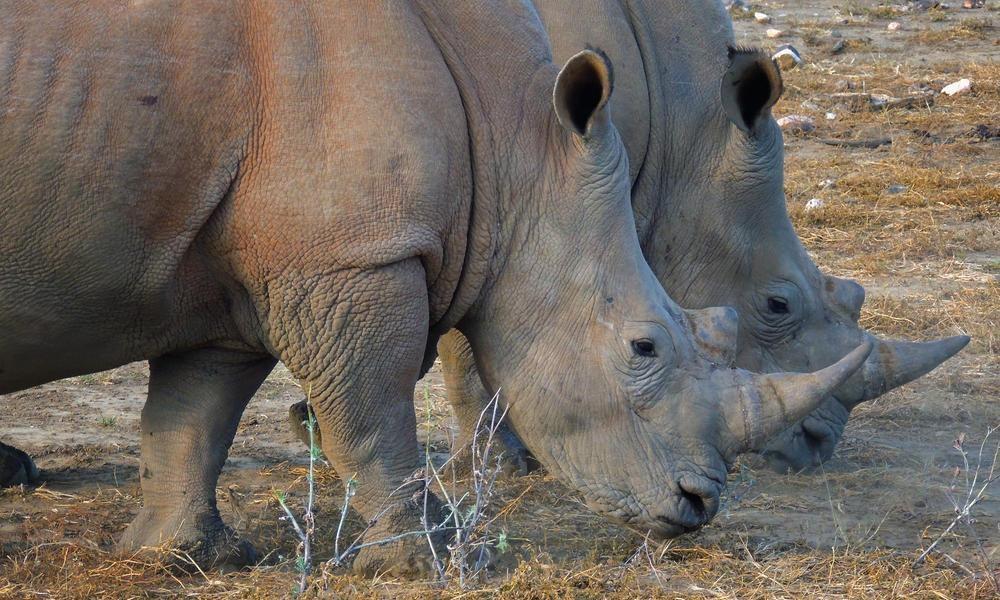Less than 8% of wildlife crimes convicted
ELLANIE SMIT
WINDHOEK
Less than 8% of suspects arrested in connection with wildlife crimes of high-valued species last year have been convicted.
Only 23 suspects out of 304 arrested last year for rhino, elephant and pangolin wildlife crimes have been convicted thus far.
A total of 1 055 suspects have been arrested in connection with wildlife crime cases since the beginning of last year to 31 July.
Of these, the majority are Namibians (958) followed by Angolans (40), Zambians (40) unknown nationality (14), Asian (1), Motswana (1) and Zimbabwean (1).
According to the statistics provided by the tourism ministry, last year, 304 suspects were arrested for high-valued game such as elephants, rhino and pangolin.
Of those arrested, 151 suspects are in custody and awaiting trial, while 112 are on bail. Furthermore, 23 suspects have been convicted, while 10 were acquitted, three absconded, two were discharged and one case has been withdrawn. Two suspects have also died.
Poaching stats
According to the ministry, 10 rhinos have been poached this year to date.
In 2014, rhino poaching numbers stood at 56, increasing to 97 in 2015 and then dropping slightly to 66 in 2016 and 55 in 2017.
It then sharply increased again to 81 in 2018, dropping to 54 in 2019 and last year 32 rhinos were poached.
This year to date, only four elephants have been poached in comparison to the 12 elephants poached last year.
In 2014, when poaching started to increase in Namibia, 78 elephants were killed, peaking at 101 in 2016.
Since then, there has been a decline in the number of poached elephants, with 50 poaching cases reported in 2017, 27 in 2018 and 13 in 2019.
According to statistics provided by the environment ministry, the four poaching cases for this year occurred in the Nyae Nyae and Ondjou conservancies in the Otjozondjupa Region, in the Buffalo Core Area, Omega 1, and the Mahango Core Area in Kavango East.
The ministry has attributed the decline in poaching to increased law enforcement activities against wildlife crimes through their collaboration with law enforcement agencies.
They said intelligence has also led to more arrests of perpetrators before the actual poaching. Arrests also serve as a deterrence, the ministry said.
WINDHOEK
Less than 8% of suspects arrested in connection with wildlife crimes of high-valued species last year have been convicted.
Only 23 suspects out of 304 arrested last year for rhino, elephant and pangolin wildlife crimes have been convicted thus far.
A total of 1 055 suspects have been arrested in connection with wildlife crime cases since the beginning of last year to 31 July.
Of these, the majority are Namibians (958) followed by Angolans (40), Zambians (40) unknown nationality (14), Asian (1), Motswana (1) and Zimbabwean (1).
According to the statistics provided by the tourism ministry, last year, 304 suspects were arrested for high-valued game such as elephants, rhino and pangolin.
Of those arrested, 151 suspects are in custody and awaiting trial, while 112 are on bail. Furthermore, 23 suspects have been convicted, while 10 were acquitted, three absconded, two were discharged and one case has been withdrawn. Two suspects have also died.
Poaching stats
According to the ministry, 10 rhinos have been poached this year to date.
In 2014, rhino poaching numbers stood at 56, increasing to 97 in 2015 and then dropping slightly to 66 in 2016 and 55 in 2017.
It then sharply increased again to 81 in 2018, dropping to 54 in 2019 and last year 32 rhinos were poached.
This year to date, only four elephants have been poached in comparison to the 12 elephants poached last year.
In 2014, when poaching started to increase in Namibia, 78 elephants were killed, peaking at 101 in 2016.
Since then, there has been a decline in the number of poached elephants, with 50 poaching cases reported in 2017, 27 in 2018 and 13 in 2019.
According to statistics provided by the environment ministry, the four poaching cases for this year occurred in the Nyae Nyae and Ondjou conservancies in the Otjozondjupa Region, in the Buffalo Core Area, Omega 1, and the Mahango Core Area in Kavango East.
The ministry has attributed the decline in poaching to increased law enforcement activities against wildlife crimes through their collaboration with law enforcement agencies.
They said intelligence has also led to more arrests of perpetrators before the actual poaching. Arrests also serve as a deterrence, the ministry said.




Comments
Namibian Sun
No comments have been left on this article